When I boarded a plane last weekend to attend the spring/summer 2026 edition of Milan Fashion Week Men’s, which concluded yesterday, I knew that this would be a different kind of show season. First, there were notable absentees: many of the usual headliners, from Gucci and Fendi to JW Anderson, chose to sit out this year’s event as they attempted to rebrand and rethink their strategy under new executive teams.
Given the wave of hirings and firings that has been sweeping through luxury houses, it didn’t come as a surprise. But this was the first season in which the effect of the industry’s HR crisis was so visible. There was less excitement or novelty on the runways than in recent years and fewer international attendees too. The disruptive cycle doesn’t seem to have reached its end either: yesterday, Prada announced the departure of its CEO, Gianfranco D’Attis, just a few days after Francesco Risso stepped down from his position as creative director of Milanese label Marni and Ben Gorham left beauty label Byredo, which he founded in his native Stockholm in 2006. The biggest news, though, was François-Henri Pinault handing the reins of Kering, the luxury group founded by his father, to former Renault CEO Luca de Meo.
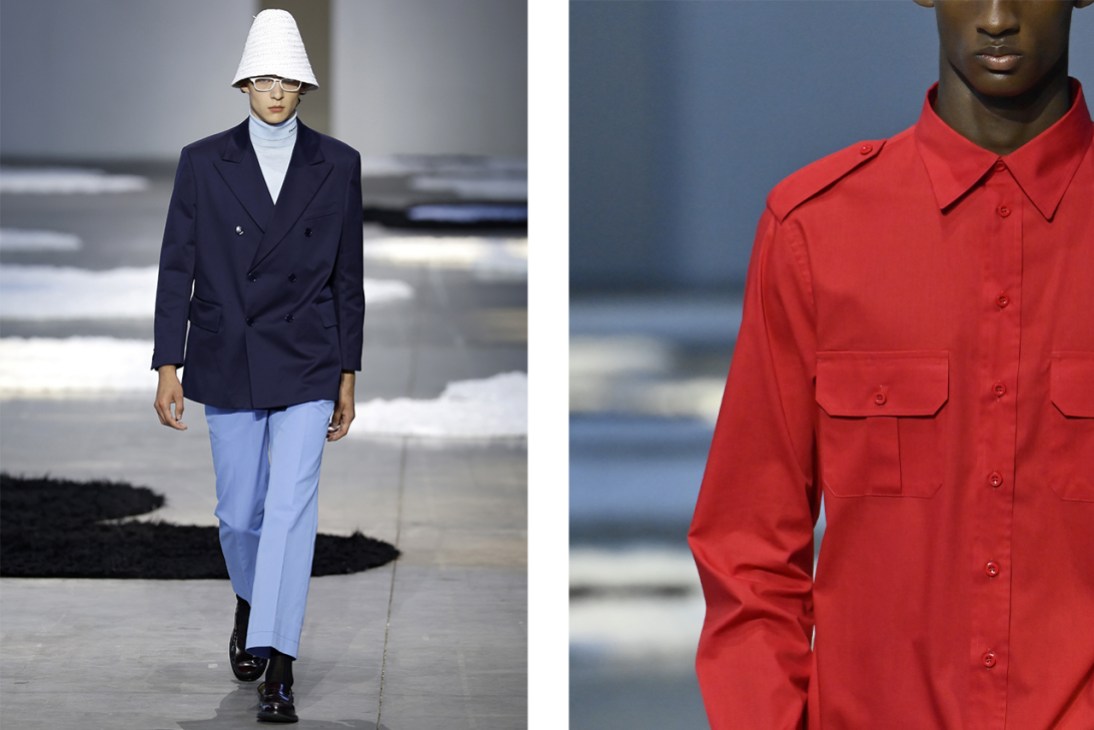
However, there are brands proving that they have lasting power, delivering artisanal quality and desirable collections season after season. At Brioni, Norbert Stumpfl has continued to refine his tailoring with feather-light fabrics; Canali has crafted leather outerwear inspired by vintage cars; meanwhile, Zegna’s Alessandro Sartori continues to raise the bar with new fabric innovations, from washed silks to hand-woven suede cardigans that take as long as a year to craft. In most cases, the winning businesses are still run by their founding families, with a clear vision about who they are and a strategy of pursuing slower growth.
Like other industries, fashion is also having to grapple with the current geopolitical situation. News of the US bombing of Iran broke hours before the Prada show in Milan, where models walked to an ominous soundtrack, though they were wearing optimistic primary colours. “What can we do but try to put a smile on people’s faces?” said Raf Simons, the brand’s co-creative director, while a pensive Miuccia Prada nodded in the background. “We have been trying to change the tone to something more gentle, looking to nature,” she said. “It’s the opposite of aggression, power and nastiness.” In such moments, big thinkers such as Prada are the ones who will hold on to their relevance. As Milan passes the baton to Paris Fashion Week Men’s, which starts today and runs until 29 June, all eyes are on the larger-scale luxury houses to see who will rise to today’s challenges.
Here, we round up the brands that stood out in Milan and approached a testing season with grace.
The British delegation
With London Men’s Fashion Week cancelled, the UK’s leading menswear names are making a new home in Milan, where they can continue a dialogue between the worlds of British and Italian tailoring. Paul Smith, who is usually a regular in Paris, chose to invite the industry to his own Milanese showroom – a modernist space near Porta Romana – for his Milan Fashion Week debut. “[Owning property] is a big advantage, especially in this world that we live in,” said Smith backstage. His spring/summer collection, which featured sleek pinstripe suits and splashes of vibrant colour inspired by the bazaars of Cairo “and all the trinkets you discover in a street market,” offered a much-needed moment of lightness – as did Smith’s joyful skip down the showroom stairs before taking his final bow.
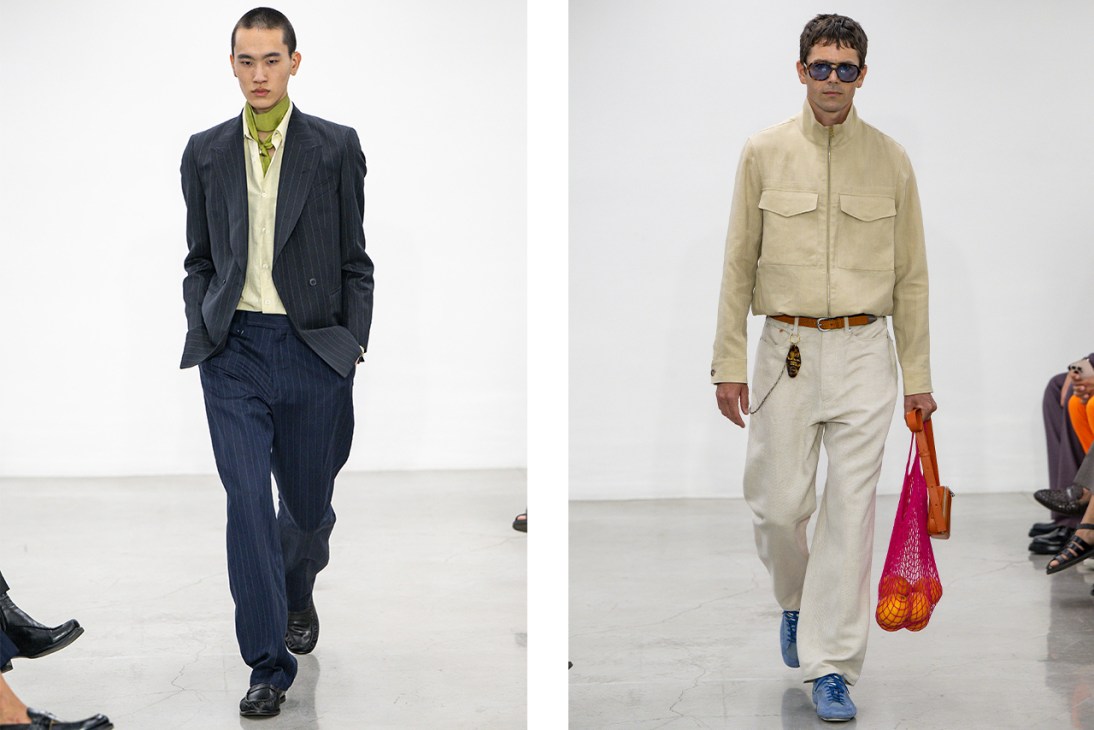
A day later in a hidden Milanese garden, Simon Holloway, creative director of London-based label Dunhill, presented a more formal version of British tailoring, while still sprinkling the right touches of humour: bright stripes and straw hats for garden parties, with patterned ties and linen suits channeling Bryan Ferry. “I love that [Ferry] wears the most classic, English clothing but maintains a cool factor – it’s a studied kind of wardrobe,” said Holloway during a preview. His precision is a joy to observe: everything is considered, from the vintage watches and signet rings accessorising his looks to the impeccably groomed dogs walking down the runway alongside some of the models. It’s no wonder that he has reignited interest in Dunhill so quickly.

A welcome return
Off the runway on the quiet Via Bigli, Turkish designer Umit Benan opened the doors to his first boutique – a space dressed in dark mahogany inspired by yacht interiors, filled with mid-century design pieces. His collection of relaxed tailoring, cotton basics and intricate tunics is on show alongside Jacques Marie Mage eyewear and jewellery. Head downstairs to place a bespoke order and keep an eye out for more retail projects from Benan. With a new investor on board, the designer is broadening his ambitions and plotting openings in more fashion capitals in the near future.

Armani reigns supreme
This season we lost a moment that never fails to bring a smile to even the most stone-faced of fashion editors: Giorgio Armani didn’t take his famous finalé bow, as he was recovering from a short bout of illness at home. But the two collections presented by his teams (for his eponymous label as well as for his Emporio Armani line) were still momentous. At Emporio Armani, the audience was brought to Central Asia by way of Africa. Armani revisited his love of travelling and discovering new cultures by adding patterned tunics, intricate bead embroidery and crocheted bags to his usual repertoire of silk sets, collarless shirting and loose tailoring. His consistent commitment to elegance, refinement and trend-free design is a breath of fresh air during a time when the fashion industry’s constant search for novelty is getting old.
Natalie Theodosi is Monocle’s fashion director. Look out for reports and interviews from Paris this week on monocle.com and Monocle Radio. And subscribe to never miss a beat.
The Milan offices of Italian fashion house Tod’s feel more like a high-end hotel than a commercial HQ. On the third floor of the Corso Venezia palazzo, past immaculate wooden and marble fixtures, Monocle is being served coffee in a light-filled room while awaiting the arrival of the brand’s patriarch and group chairman, Diego Della Valle, the third-generation family owner. He soon walks in through a side door, dressed in a navy blazer, his shirt collar riding up over a dark silk scarf. He sits down at the head of our table, placing a yellow notepad headed with his initials in front of him.
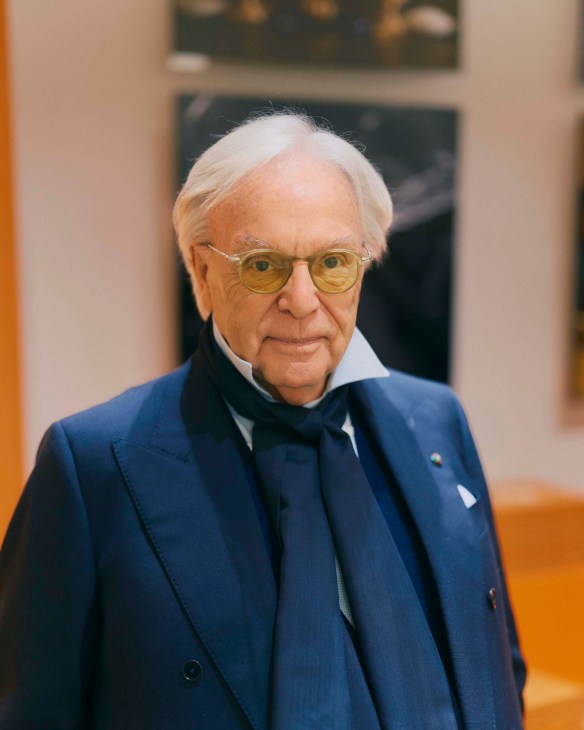
Della Valle oversees an Italian success story. In 2023 Tod’s reported annual sales of about €560m, while group figures (the Tod’s Group portfolio also includes labels such as Paris-based Roger Vivier and Hogan) topped €1.13bn. The company, which Della Valle’s grandfather started as a humble cobbler’s workshop, is now a global powerhouse. It’s still renowned for its shoes but has also branched out into everything from bags (Princess Diana was a fan and has a bag named after her) to ready-to-wear, the latter since 2005. The company is based in the family fiefdom of Casette d’Ete in the central Marche region and production remains in the area to this day.
Its continued investment in Marche’s artisan community, known for its mastery of leather, is what sets the company apart, says Della Valle. “We’re always looking to do difficult things,” he says, in a hushed, considered tone. “That means products that are difficult to make and also hard to copy.” He adds that, unlike a bag with a big logo emblazoned on the side, you can’t fake superior quality. “Every leather hide is different.”
As you might expect from a fashion player such as Tod’s, embodying Italy’s lifestyle – including its craft prowess, as well as its flair for quality and slower living – is part of its raison d’être. Indeed, one of the reasons why we are sitting around the table at the Milanese outpost of Tod’s is to celebrate the company’s new book, Italian Hands, the latest instalment in its coffee-table collection. The book tells the stories of Italian creatives and the artisans with whom they collaborate, from a glassblower in Murano to a master of terracotta. The limited-edition book, which puts the spotlight on what Della Valle calls “Italian good taste”, is filled with images of bag straps being braided, Gommino loafers being stitched and ceramicists’ brushes being dipped in sunny yellow pots of paint. The idea is to capture the company’s ethos of celebrating handcraft. There are barely any commercial or marketing objectives, with the edition only available to private customers.
For Tod’s, investing in the quality of life of in-house talent, as well as that of the broader community, is a priority. Whether it’s providing a crèche at the Marche headquarters and helping build an elementary school or financing the restoration of the Colosseum in Rome and Milan’s city hall, Della Valle is a strong believer in the positive social and cultural impact that successful companies can make – an ethos once followed by the likes of Olivetti and more recently Zegna, which has invested heavily in the Piedmont countryside. Della Valle talks about “the leadership role” that powerful companies must assume and the importance of helping to build something for their countries.
The publication of Italian Hands is also designed to celebrate the Gommino shoe – perhaps the best-known product in the Tod’s portfolio. Blending a leather driving loafer with a more technical rubber-studded sole, it became an instant hit on its launch in the late 1970s. The key was creating a shoe that could accompany both dress-up and dress-down looks and, by extension, be used throughout the whole week.
“At the time there was a world of elegant things but they were all formal,” says Della Valle. “And then there were things for the weekend but they were almost always technical and sporty. So what we did, quite intentionally, was to turn designs that were originally used for moments of relaxation into products that could also be worn with work clothing.” Part of the job involved what he calls “nobilising” rubber, which had previously been looked down upon in bourgeois circles, despite how practical and versatile it could be. Today you’ll spot as many pairs of Gommino shoes in boardrooms as you will in beach clubs – the most stylish wearers usually pairing them with linen shirts and bright-coloured trunk shorts, only to swap them for open-toe sandals moments before stepping on hot sand.
Della Valle might have been central to the Gommino’s genesis but he likes to credit the team around him, as well as his father, Dorino, who died in 2012 at the age of 87. Together they created a design icon that allowed Tod’s to enter fashion’s big leagues. However, around the same time in the early 1980s, Della Valle realised that the company needed to move beyond the family surname that it was using at the time. “My only request was to have a short name that was easy to pronounce,” says Della Valle. The idea was to move on to something that better reflected the company’s increasingly international market.
In 1984 the company was rebranded and renamed JP Tod’s (the initials were officially dropped in 1997), a choice that has plenty of lore around it. Some have suggested that the name was picked from a US phone book – a story that Della Valle says is only true in part. “Having a name that was a bit Americanised was a concept that was very much in vogue at the time among the big brands,” he says. “The people who came up with [our rebrand] were me, the typographer from my village and the owner of the printing press. Now there are 3,000 people doing that work.”
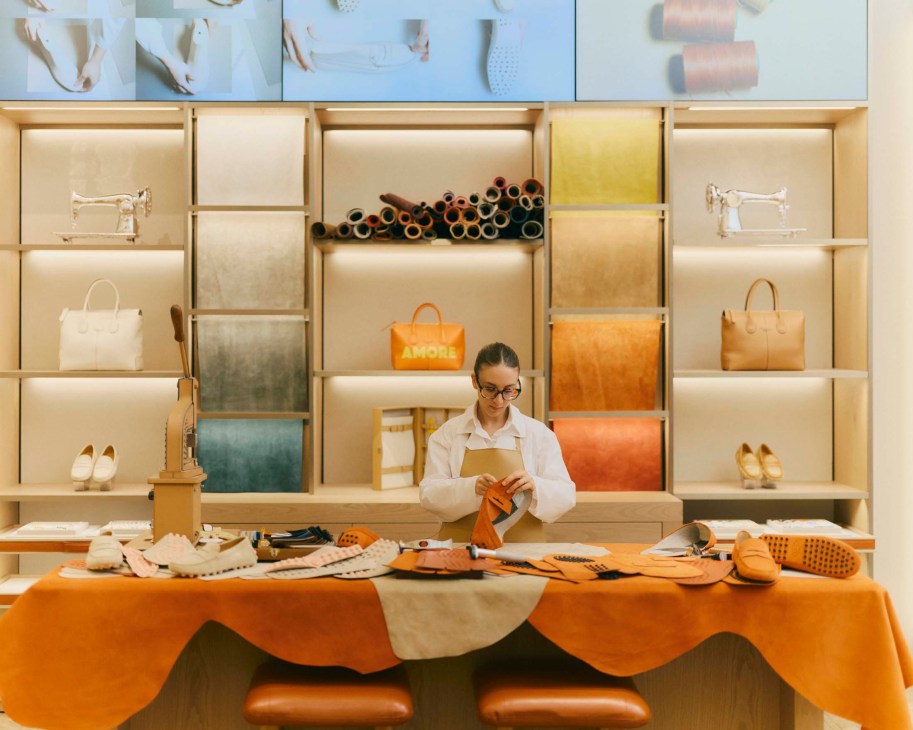
Like most large companies that are invested in makers, Tod’s has a talent pipeline to think about. Ensuring that people have “the desire to do [the work]” is at the forefront of Della Valle’s mind as he tells Monocle about the pride of the sewers who work at the Marche factory. Bottega dei Mestieri, a programme created in 2012, is a key part of this nurturing process. Artisans nearing retirement are paired with interns who often go on to work for the brand. “Young people give a bit of energy to the [older artisans] and they give back their wisdom in return,” says Della Valle, adding that instead of simply asking workers to show up and put their heads down, the scheme fosters dialogue between generations. “The artisan manages his own hands,” says Della Valle, turning philosophical for a moment. “It is very important for young people to understand the concept that if you are a craftsperson, you are truly free.”
As well as its nationwide largesse, Tod’s continues to build abroad. Recently the brand explored digital product passports to ensure that its supply chains are more traceable. It has also shaken up its ready-to-wear offering, with Matteo Tamburini, formerly of Bottega Veneta, joining as creative director in 2023.
Meanwhile, last year, Tod’s Group made the decision to delist and go private – a move that involved Della Valle stepping away from his role as CEO. (John Galantic, formerly of Chanel, now holds this position.) “It was the right moment to leave [the stock exchange] because we need to invest a lot in future development, which potentially is enormous,” says Della Valle.
As for what that future looks like, the chairman of the board and owner won’t give too much away, though he admits that he is interested in furniture and leather jewellery. And while he might be slightly less involved in the day-to-day running of the company these days, there has been no dip in his enthusiasm and his travel itinerary remains packed. He is already planning a swift return to Marche following his meeting with Monocle, then on to Morocco.
The key thing seems to be to stay true to what the brand does best: producing wares to the highest standard and achieving that delicate balance between novelty and continuity. “It’s important for companies like ours to never betray the quality,” says Della Valle, summing up his – and by extension, the company’s – ethos. “And we need to be absolutely modern.”
tods.com
Helen Brocklebank is the chief executive of Walpole, the official sector body for the UK’s luxury industry. As the wider industry faces economic uncertainty, there are still opportunities aplenty if you know where to look. Here, we talk to Brocklebank about emerging trends and Walpole’s role in supporting UK talent.
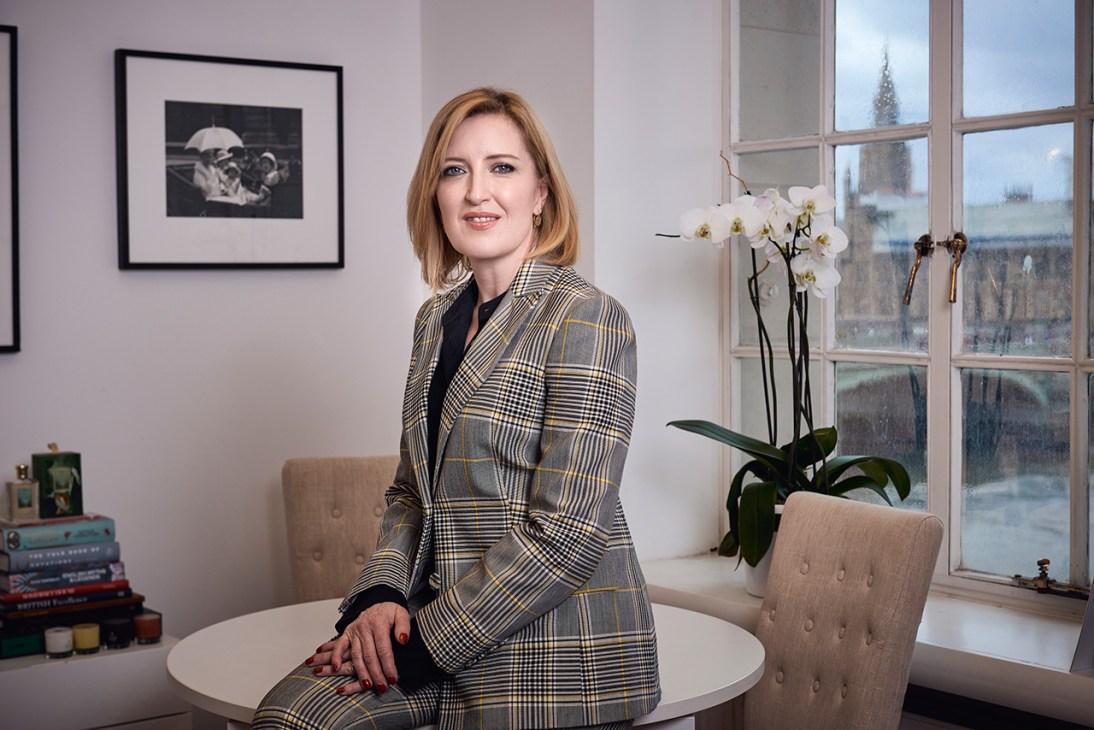
What trends in the industry are you seeing emerge?
From the customer’s point of view, the origin and personality of the product’s place of production is increasingly important. There are very interesting national characteristics in the premium market. French luxury is opulent and there is an element of art for art’s sake. The Italian economy is slightly broader with many entrepreneurs and founders of brands such as Prada and Armani. Then there are other sectors including design, hospitality and gastronomy.
The UK industry is broad as well, with 12 sectors. There are the personal luxury brands, which include Burberry, Manolo Blahnik, Mulberry and Dunhill, all the Savile Row tailors, Church’s shoes, Boodles and Jessica McCormack among others. But the biggest sector is premium automotive: think world-class manufacturers such as Bentley, Rolls-Royce, Aston Martin and Land Rover.
Then there’s food and drink (scotch whisky is the biggest UK export in that category), hospitality, beauty and fragrance. The idea of taking into consideration where something is made is a real theme in all of these categories.
The market is much tighter this year for premium goods. Of course, there is an external context with geopolitical upheaval and financial turbulence. In the UK, of the £81bn (€96.2bn) value that the industry has, £56bn (€66.5bn) is destined for export. So international customers – particularly from the US, the Middle East and APAC – are hugely important. When one catches a cold, or all as they have recently, that causes disruption.
During this global recalibration of the industry, there has been a period of complacency. The slowdown has been a shock but one that brands have leaned into very quickly. This is why we have seen numerous international labels change creative directors. It’s because creativity is the secret sauce of luxury.
Constraint is the godmother of ingenuity. You have to focus on the true fundamentals of premium craft, which is creativity, extraordinary craftsmanship and quality that gives customers a reason to believe in provenance. Scarcity is a factor as well, a term rarely mentioned in the business recently.
The UK’s luxury industry is uniquely placed to win in this market because of its unique entrepreneur-led brands that value new ideas.
Which sectors do you see new opportunities in?
Transformative luxury or the idea of transforming the self by optimising our bodies. At the extreme end, it’s about biohacking and extending lifespan. But how can we make sure that our life is as rich as possible in every way? It’s where medicine and premium care meet. When you’ve got everything you can own, luxury becomes what money can’t buy.
In this slightly constricted market, we’re still seeing growth in the top end. About one per cent of the consumer base is responsible for 40 per cent of purchases. Every brand is looking to see how they can better understand the needs and passions of their very important customers (VICs) and how to deliver products in a way that feels meaningful. Personalisation of experience relies on knowing the buyer’s behaviour and how it changes according to geographic region. What a VIC wants in the US will be different to those in China.
There are big opportunities despite the tariffs and the Chinese market. China accounts for 11 per cent of the UK’s luxury exports and it’s a rapidly developing economy that is growing by five per cent a year. There’s no systemic fault in China’s economy – it’s an 18-month to two-year problem. So how do we make better and meaningful inroads into their market? The consumer base is there, so it’s up to the brands to drive the beauty and message behind a product.
How much more relevant will the ability to cross disciplines become?
For any successful label, the starting point is the customer’s lifestyle. You must ask: how can we show up in as many places in their life as possible? Prada now creates tableware and Armani Casa has been around for a long time. Even Bentley has a design division.
It will be interesting to see how that cross pollination continues. It’s good to know how you can become part of your customer’s world. With a manufacturing facility’s skills, you could be making a beautiful chair while also making a great pair of shoes. Johnstons of Elgin produce incredibly high-quality cashmere in Scotland for all the top-end international brands but they also do the most luscious interiors. It was able to translate its gorgeous cashmere blankets into an armchair, curtains and even wall coverings.
There is a balance to preserve; a brand shouldn’t forget its core and try to do too many things. But you have to be playful. Luxury must not forget that it is about joy and fun.
How does Walpole support the luxury industry in the UK?
Walpole is the only sector body in the country that acts as a collective voice for the boutique market. We don’t have an LVMH or a Kering – we have lots of extraordinary independent brands. As a convening body, Walpole’s power to bring them together is incredibly important. At a time of great challenge, unity and knowing that you can win as a group is more important than ever.
Our mission is to protect, promote and develop the business of luxury. Last year, the industry was valued at £81bn (€96bn). It will continue to develop but if we don’t work as an organisation, we can compromise that great growth trajectory.
Politics really matters right now, so we have been focusing on the US tariffs – particularly in getting them reduced in the automotive sector. We are also focused on what the government can do to mitigate the impact of those tariffs by getting tax-free shopping back so that we can compete with Europe by encouraging US customers to spend in the UK.
Additionally, we hold events designed to feed the collective intelligence of this sector. We share with brands where the opportunities are, what the VICs are after and what the newest trends are.
We also have a programme called Brands of Tomorrow that nurtures up-and-coming labels and creates an organic pipeline for growth. It has been 18 years since we began the programme and 150 brands have come through it, 90 per cent of which are still in business. We’re bucking the trend of early-stage failure. The enthusiasm for new names is where the UK can win. If you’re a sophisticated customer, finding something new and interesting that is also beautifully designed is a form of luxury.
Visitors to the Burj Khalifa are usually content with a latte at Atmosphere on the 122nd floor and a view of Dubai from the observation deck. But last week I took a different lift – or rather three – for a peek inside what is billed as the world’s highest penthouse, which is now on sale. The sprawling Sky Palace is perched on the 107th and 108th floors of the world’s tallest building, some 700 metres above the ground. A monument to both altitude and attitude, it feels far removed from the metropolis that it overlooks. The penthouse inspires a sense of awe but there’s also a whiff of absurdity: from here, even popping to the shops is a 15-minute logistical exercise.
The first lift takes you up to the 73rd floor, where you’ll find a slick lounge with polished parquet floors and panoramic windows. From there, another whisks you to the 107th floor. One final ascent on the penthouse’s internal elevator brings you up to a vast space with double-height windows that allow you to look down on helicopters hovering below.

Want to nip out for dinner? Maybe you should consider investing in a parachute. Left something in the car? Then prepare for three lift journeys and a protracted chat with the valet. Even seasoned staff might find it exhausting. My ears are still popping.
We’re told that there’s interest in the Sky Palace among the usual suspects: a member of the UAE’s royal family has viewed it, as have several Emirati billionaires. A steady flow of prospective buyers has come from the US, Russia and China. But for all its height and hype, the Sky Palace enters a market that – dare we say it – is slowly coming down to Earth.
Luxury in Dubai is turning low-rise. Developers are shifting their focus to waterfront villas and low-slung hideaways, particularly in ritzy enclaves such as Jumeirah Bay, where homes are being sold for as much as $90m (€79m). Some 9,000 villas were completed in Dubai last year, with almost 20,000 more in the pipeline for 2025. Part of this shift is practical. Many people want to build to spec and avoid the awkwardness of sharing a lift (or several). But it’s also a sign of a maturing market. Demand remains high but supply is catching up. Sure, if you’re into brag-worthy views that stretch to the horizon, the Sky Palace delivers. Just don’t expect everyone in Dubai to be impressed, as tastes are clearly changing. And try not to drop your keys outside: it’s a long way down if you lose them.
Rashid is a Dubai-based journalist and a Monocle contributor.
Want to read more? Bjarke Ingels and Dubai-based developers ARM Holding are redrawing the city’s map, making it greener than ever. Click here for the full article.
India is a curious holdout when it comes to traditional dress: take any street in Mumbai or any train in New Delhi and you’ll see draped saris, three-piece salwar sets and Madras-checked dhotis fluttering in the breeze, far outnumbering jeans and t-shirts. Homegrown luxury brands have long traded on this pride, with the likes of Sabyasachi and Tarun Tahiliani’s ornate lehengas and gilded occasion accessories, but tastes are evolving: the style set is now mixing Anite Dongre and Dior and tying Hermès silk scarves over Raw Mango shifts. India’s cachet is on the rise – and the luxury market is watching closely.

Western brands have been eyeing the subcontinent for some time but many have seemed unsure on how exactly to go all in. Regulation is one reason: tight restrictions on foreign ownership means that luxury houses must team up with local partners to enter the market. Reliance Retail, headed up by Mukesh Ambani, has come out on top: its Mumbai mall, Jio World Plaza, opened in 2023 and introduced Balenciaga and Dior Mens to the country while expanding the footprint of houses such as Valentino, Versace and Louis Vuitton. Meanwhile, French multi-brand retailer Galeries Lafayette will launch in India in 2025 via a partnership with Aditya Birla Group.
Some brands have already made inroads. For years, Jimmy Choo has crafted Diwali-specific capsule collections. “India has a deep-rooted appreciation for luxury, craftsmanship and glamour,” says the shoe label’s creative director, Sandra Choi.
Namrat Klair, the marketing consultant behind LVMH’s presence in the country, has had a front-row seat to India’s growing appetite for luxury. “Over the past decade and particularly following the coronavirus pandemic, we’ve seen a major shift,” she tells Monocle. When travel was restricted, consumers began shopping domestically – and brands rose to the occasion by upping their in-person presence. They finessed their in-store offerings and pushed for access to collections in step with the global market. Chanel’s managing director of India, Amit Goyal, agrees: Chanel customers are now seeking “exceptional client experiences” at home as well as abroad.
Since Chanel’s entry into the Indian market in 2005, the luxury landscape has shifted significantly. Goyal is optimistic and says he has observed “promising trends” and “consistent growth” for the French maison over the past five years. E-commerce is also promising: the launch of Chanel’s online beauty offering in 2024 was “met with enthusiasm, notably from tier-two and tier-three cities,” he adds. Goyal also teases the arrival of a new Mumbai outpost, which would mark the house’s 10th retail point in the country. In the wake of China’s slowdown and India’s rising purchasing power – the percentage of ultra high-networth individuals in the country is set to balloon by 50 per cent by 2028 – this is a market worth keeping an eye on.
The luxury slowdown has been one of the fashion industry’s biggest topics of conversation this year, dominating headlines and post-runway chatter. Retailers are reassessing their budgets and renegotiating selling terms with brands, while luxury houses are downsizing their events. Some media types are wondering whether they will lose their fashion-week chauffeurs next season.
There is no questioning the slowdown. For the first quarter of 2025, LVMH, the world’s largest luxury group, reported a 4 per cent sales drop for its all-important fashion and leather-goods division, while sales at Kering-owned Gucci dropped by 25 per cent. Donald Trump’s tariffs pose another very real threat, with brands needing to reconfigure their supply chains and potentially raise prices that are already inflated. This week, Louis Vuitton made the decision to increase the price of its popular Neverfull tote by 4.8 per cent in the US.

But the industry also has a tendency to overreact. Hermès has just reported a 9 per cent revenue uptick, reaching more than €4bn, while Brunello Cucinelli grew by 10.5 per cent. The Prada Group has also turned Miu Miu into a billion-euro brand and expanded its portfolio, acquiring fellow Italian label Versace for €1.2bn.
Opportunity still exists. But with tougher market conditions, customers are reassessing the value of luxury, raising their standards and only investing in best-in-class quality or designs that touch them emotionally. Some houses have been relying on branding and reissuing archival designs for a little too long – a “band-aid strategy”, as analysts like to call it, that is now catching up with them.
When I think about the chasm between different brands’ balance sheets, I keep returning to a conversation that I recently had with Amy Smilovic, a designer and Tibi’s founder, who alighted on her own formula for success by downsizing her company, focusing on her own taste and ignoring industry trends. “You can’t do luxury on €1bn of sales,” she told me. The success of the likes of Hermès and Miu Miu might contradict her statement. Still, it’s becoming clear that achieving luxury at scale is a near-impossible undertaking. It requires a delicate balance of creative risk-taking and smart financial forecasting that only the boldest, most visionary business leaders will be able to get right in the current landscape.



